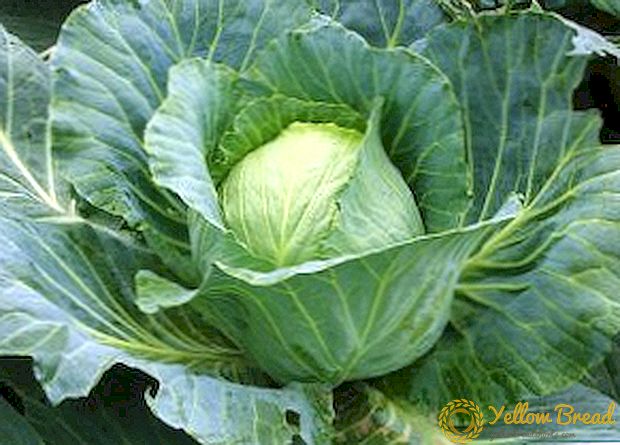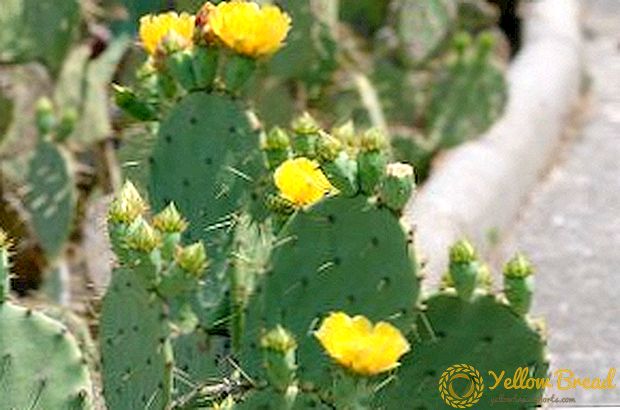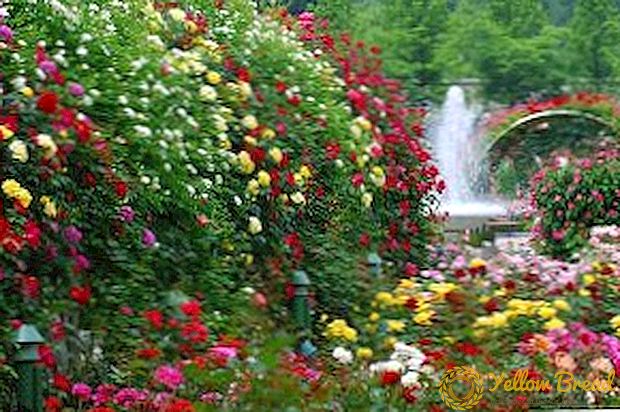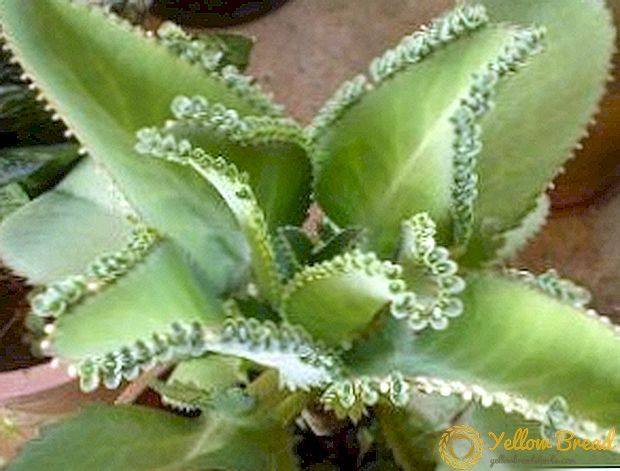 In the world of gardeners plant viola is very popular. There are a large number of varieties and types of viola, better known by the people as pansies.
In the world of gardeners plant viola is very popular. There are a large number of varieties and types of viola, better known by the people as pansies.
The wide distribution of these wonderful colors due to their beauty and variety of colors and shapes. Viola flowers are pleased with the long flowering period with a properly perfect planting and subsequent care, from early spring to late autumn.
- Where to plant the viola, the choice of place for the flower
- What kind of lighting and temperature does the viola like?
- What should be the soil for planting
- How to plant pansies
- Viola Care Rules
- How to water pansies
- Fertilizer and fertilizing flowers
- Soil care
- Breeding methods viola
- Seed propagation
- Reproduction by cuttings
- Reproduction by layering
Where to plant the viola, the choice of place for the flower
 Viola belongs to the Violet family, therefore it is also called the garden violet. The plant is one-year, two-year, and also long-term.Depending on the variety of flowers viola planting and cultivation can be carried out even on the balcony, providing it with proper care.
Viola belongs to the Violet family, therefore it is also called the garden violet. The plant is one-year, two-year, and also long-term.Depending on the variety of flowers viola planting and cultivation can be carried out even on the balcony, providing it with proper care.
In the open field, a high flowerbed would be an ideal place for a viola, since it meets the plant's need for moisture and light.
What kind of lighting and temperature does the viola like?
These flowers grow best in a cool place, but they also need a lot of light. Therefore, places with slightly shaded areas are the right choice for planting the viola and further care in the open field.
For example, under young trees that do not close the leaves the main part of the lighting, but will protect from the arid influence of the direct rays of the sun. At home, suitable balcony on the west or east side.
If there is little light for the viola, then the flowering will not be as abundant, and the flowers themselves will be small and not so bright.
What should be the soil for planting
The best soil for pansies is a loamy soil, fertile and moist.
 The soil for planting needs to be drained and plowed. Fresh humus cannot be used as a fertilizer, therefore superphosphate or ammonium nitrate will be suitable.
The soil for planting needs to be drained and plowed. Fresh humus cannot be used as a fertilizer, therefore superphosphate or ammonium nitrate will be suitable.Also, peat is ideal for viola as a primer, as it retains heat, moisture does not stagnate in it. In addition, peat contains the nutritional elements necessary for the viola; therefore, gardeners often use peat tablets for plant germination.
How to plant pansies
Most often, the planting viola is carried out in open ground. This happens in April-May, as the plant loves coolness. The proportions for the soil is better to choose the following:
- sod land - 2 parts;
- peat - 2 parts;
- humus - 2 parts;
- sand - 1 part.
It is fairly easy to follow the basic rules of how to plant viola flowers in open ground and how to carry out the subsequent care.
 For seedlings prepare the holes (the distance between them - 10-15 cm), put flowers there, then sprinkle them with earth, slightly tamper the soil around and carry out watering.
For seedlings prepare the holes (the distance between them - 10-15 cm), put flowers there, then sprinkle them with earth, slightly tamper the soil around and carry out watering.
It is better to plant different varieties separately from each other, because the plant is cross-pollinated.
Viola Care Rules
Often gardeners think about how to grow a beautiful and healthy viol. To do this, regularly remove the flowers that wilted. In addition, to prolong the flowering of pansies will help mulching the roots of the plant in hot weather. Be sure to also remove ripened seed boxes.
If the viola blooms worse, few new buds are formed, then you can cut the plant, while leaving the length of the stems about 10 cm. After this, it is necessary to water and feed the viola plentifully, which will allow it to quickly grow young shoots and blossom with new forces.
How to water pansies
 Often in the heat of the cause of drying out of the roots is their proximity to the soil surface. Therefore, watering garden violets should be carried out regularly, but not too copiously, so that the roots do not rot.Optimally - 2-3 times a week, and in the heat it is possible to water the viol every day.
Often in the heat of the cause of drying out of the roots is their proximity to the soil surface. Therefore, watering garden violets should be carried out regularly, but not too copiously, so that the roots do not rot.Optimally - 2-3 times a week, and in the heat it is possible to water the viol every day.
Fertilizer and fertilizing flowers
Feeding Viola should be carried out once a month. To do this, use superphosphate or ammonium nitrate per 25-30 g per square meter. There are also special complex fertilizers, having in its composition potassium, phosphorus, nitrogen, trace elements. Such fertilizers are sold in stores and used according to the instructions.
Soil care
Flowers viola unpretentious, but during the cultivation must be maintained in a certain state of the soil. Since the roots are not far from the surface - at a depth of only 15-20 cm, we need timely watering and loosening the soil for air to reach the roots. In addition, it is important to remove weeds in time from the site where the viola grows.
Breeding methods viola
 If you want to get yourself a new viola plant with beautiful flowers, for growing it is worth choosing a method that is suitable and appropriate to your capabilities. Among them, reproduction by seeds, cutting pansies, as well as reproduction by layering.
If you want to get yourself a new viola plant with beautiful flowers, for growing it is worth choosing a method that is suitable and appropriate to your capabilities. Among them, reproduction by seeds, cutting pansies, as well as reproduction by layering.
Seed propagation
You can grow the viola seeds. Sowing takes place in several terms, depending on when you want to get flowering.
Sowing pansies in January-February, you will see the first flowers by the end of spring. However, in the conditions of an apartment it is difficult to get good seedlings, since the seeds sown need coolness and plenty of light.
If you sow the seeds of viola in March, the flowering will begin in late July - August. Next year, at the beginning of spring, both plants and other plants will give good flowering.
 If sowing is done in summer, flowers will also appear as early as next year in spring. However, in the summer, you can sow directly into the open ground, bypassing the cultivation of seedlings at home.
If sowing is done in summer, flowers will also appear as early as next year in spring. However, in the summer, you can sow directly into the open ground, bypassing the cultivation of seedlings at home.
There are general rules for sowing viola seeds:
- Seeds are poured on moist soil, lightly sprinkled with earth on top.
- The temperature in which the seedlings are should be 15-20 ° C. It is necessary to maintain a constant sufficient moisture.
- Seedlings should be in a dark place until shoots appear.
- After 10-14 days, the seeds will sprout, then you need to provide good lighting, and reduce the temperature to 10 ° C.
- After 2-3 weeks it is necessary to dive seedlings.
Reproduction by cuttings
The cuttings of pansies are carried out in late spring - early summer in several stages:
- cut off from the top of the bush green shoots, which should be 2-3 nodes;
- planted these shoots in the area in the shade to a depth of 0.5 cm. They should be close to each other;
- cuttings abundantly watered, sprayed.
 Rooting occurs in a month. From one bush you can take about 10 cuttings at a time. If you propagate the viola by cuttings you decide closer to autumn, the flowering will appear as early as next year in the springtime. If in the spring, then pansies bloom by the end of summer.
Rooting occurs in a month. From one bush you can take about 10 cuttings at a time. If you propagate the viola by cuttings you decide closer to autumn, the flowering will appear as early as next year in the springtime. If in the spring, then pansies bloom by the end of summer.The main positive point of this method of reproduction is the rejuvenation of the bush and improvement of flowering as a result.
Reproduction by layering
Many varieties of pansies form long side shoots. In September, they can be gently sprinkled with earth, and by the end of autumn they will take root.
Already in spring, these layers can be transplanted to a new place, and if they have gained enough strength, flowering will begin by the end of spring. This method allows you to save the characteristics of the variety, carrying the features of the mother bush.
Some varieties branch out themselves, while others can be a little priteen to make the shoots lengthen.
 Viola plant has more than 400 species. There are viola monophonic, spotty, striped, with wavy edges, terry. A variety of varieties, colors and shapes, abundance and duration of flowering determine the popularity and wide distribution of these beautiful plants.
Viola plant has more than 400 species. There are viola monophonic, spotty, striped, with wavy edges, terry. A variety of varieties, colors and shapes, abundance and duration of flowering determine the popularity and wide distribution of these beautiful plants.






